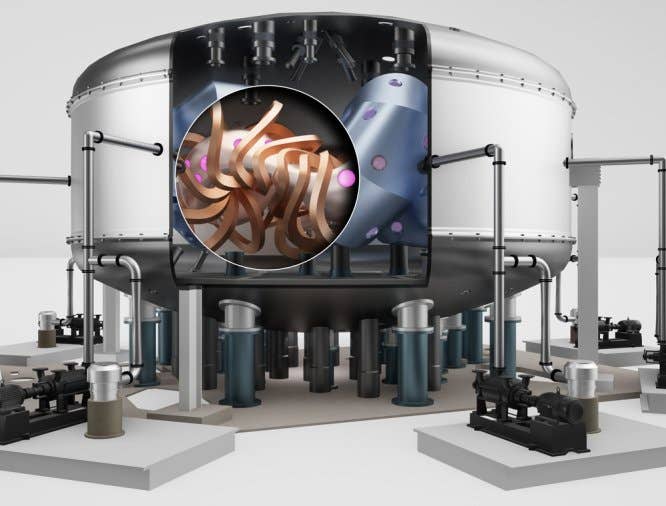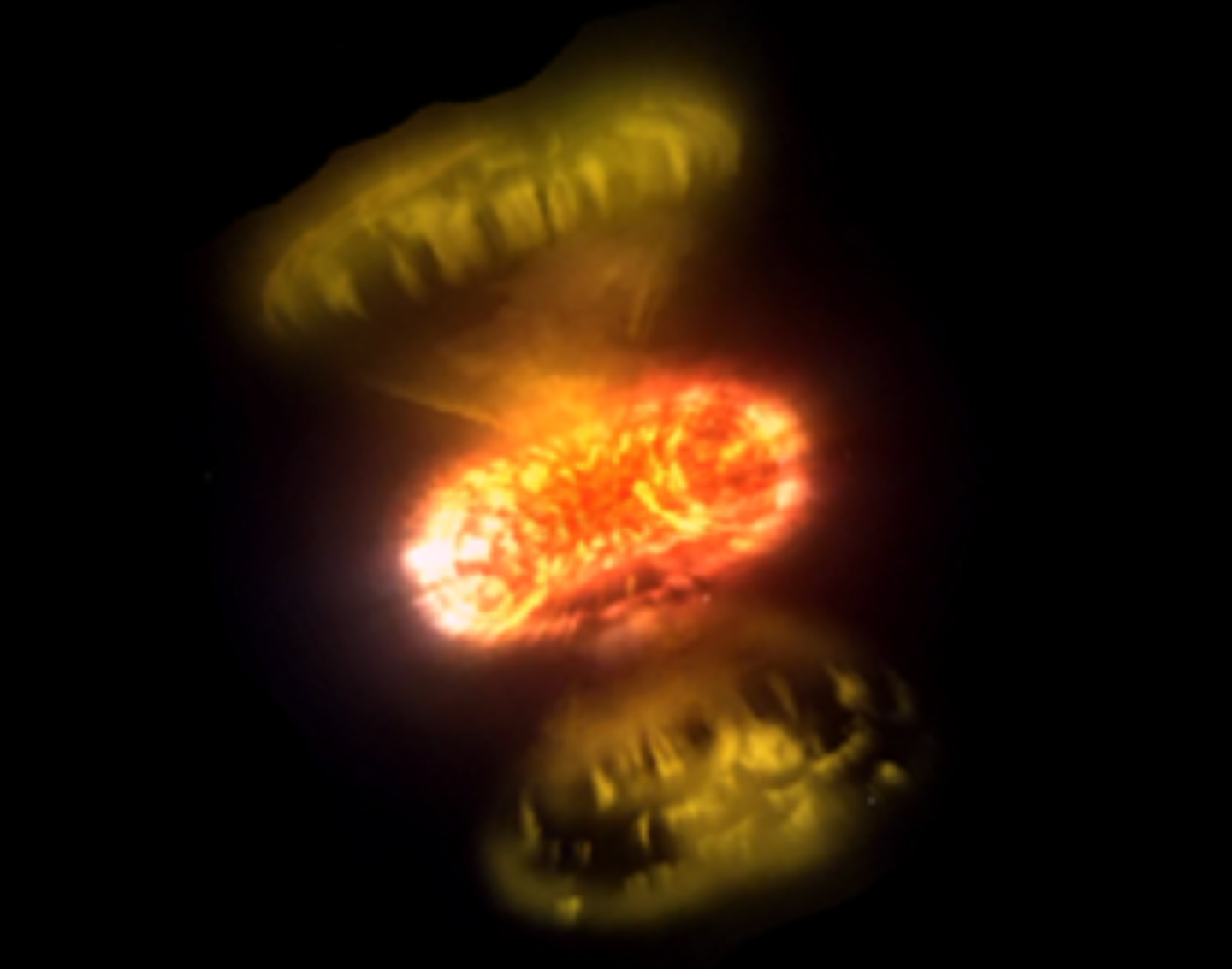Scientists solve a massive problem for fusion energy
Fusion power has long been promised as a clean, abundant energy source, but scientists have struggled to harness it effectively. A new approach, however, may finally bring fusion reactors closer…

A groundbreaking particle model revolutionizes fusion reactor design, solving decades-old challenges in stellarator particle confinement. (CREDIT: Type One Energy Group)
Fusion power has long been promised as a clean, abundant energy source, but scientists have struggled to harness it effectively. A new approach, however, may finally bring fusion reactors closer to practical reality.
Researchers from The University of Texas at Austin, Los Alamos National Laboratory, and Type One Energy Group have recently developed a powerful method to address a longstanding barrier: accurately predicting and controlling the movement of energetic particles inside fusion reactors.
The Challenge of Particle Confinement
In fusion reactors, particularly stellarators, magnetic fields trap plasma—a hot, electrically charged gas crucial for fusion reactions. Yet, energetic particles called alpha particles frequently escape these magnetic traps. When these alpha particles leak out, they reduce the plasma’s temperature and density, disrupting the fusion reaction. Accurate predictions of where particles escape are vital for reactor design, but traditional methods have significant flaws.
Until now, scientists used perturbation theory—a simplified mathematical model—to estimate particle paths and leakage areas. While efficient, this approach falls short for particles with high energy levels, specifically the alpha particles produced in fusion reactions. These inaccuracies arise because perturbation theory relies on small approximations that do not hold for energetic particles, causing large errors in predictions.
Why Existing Methods Fall Short
Traditionally, scientists have relied on a technique known as the guiding center model. This approach simplifies particle motion by averaging out fast, spiraling movements known as cyclotron gyrations. However, this approximation works well only if the particles’ gyroradii—circular paths traced by charged particles—are small compared to the reactor size.
In stellarators, reactor design often features intricate, curved magnetic fields. While the nominal gyroradius may be small, localized regions of the reactor see significantly larger values. In these areas, the guiding center approximation breaks down dramatically.
Related Stories
Recent numerical studies have highlighted this issue. For example, comparisons between full-orbit simulations (exact but computationally intensive) and guiding center models found discrepancies exceeding 60% in predicted particle losses.
Max Ruth, a postdoctoral researcher at UT, points out, "Particles moving nearly perpendicular to the magnetic field cause the biggest discrepancies. This makes guiding center predictions unreliable in critical reactor regions."
A Revolutionary Approach
Addressing this problem, the research team developed a non-perturbative method rooted in symmetry theory. Unlike perturbation theory, symmetry-based modeling doesn't rely on small approximations. Instead, it uses the intrinsic geometric properties of the system to accurately trace particle paths. This novel method delivers predictions with significantly improved accuracy at speeds nearly ten times faster than traditional full-orbit computations.
"What’s most exciting is that we’re solving something that's been an open problem for almost 70 years," explained Josh Burby, assistant professor of physics at UT and the study's lead author. "It’s a paradigm shift in how we design these reactors."
The team's method relies on extensive simulation data from full-orbit particle trajectories. Using advanced computational techniques, scientists trained a model to capture complex particle dynamics accurately. Initial tests demonstrate that this data-driven model consistently outperforms traditional guiding center predictions, particularly in scenarios involving energetic alpha particles typical in fusion reactions.
Implications for Fusion Reactor Design
The practical impact of this innovation is profound. With faster and more accurate modeling capabilities, engineers can efficiently refine stellarator designs, significantly improving reactor performance. Accurate particle confinement minimizes energy losses and prevents damage to reactor walls, critical factors for sustainable and safe fusion operations.
Leopoldo Carbajal, computational scientist at Type One Energy Group, underscores this importance: "Modern optimized stellarators show promising results, but discrepancies between models indicate the guiding center approach still needs refinement. Our data-driven approach overcomes these limitations."
Moreover, this symmetry-based modeling approach has applications beyond stellarators. In tokamak reactors, another prominent fusion design, runaway electrons pose a similar containment issue. High-energy electrons in tokamaks can escape magnetic confinement and damage reactor walls. This innovative method can also identify potential leakage points, helping engineers design safer and more efficient tokamak reactors.
Pathway to Cleaner Energy
While several hurdles remain before fusion power becomes commonplace, the progress made by Burby’s team marks a significant advancement. "Direct application of Newton’s laws is too expensive. Perturbation methods commit gross errors," noted Burby. "Ours is the first theory that circumvents these pitfalls."
The research team, including UT graduate student Ivan Maldonado and Los Alamos postdoctoral fellow Dan Messenger, continues refining their method. Support from the U.S. Department of Energy ensures ongoing development, bringing humanity closer to realizing fusion's promise of clean, sustainable energy.
As fusion technology advances, methods like these will play a crucial role in ensuring reactors operate safely and efficiently. This breakthrough paves the way for further innovations, reducing costs and accelerating fusion energy's practical deployment. The fusion reactors once envisioned in the 1950s could soon become a cornerstone of global clean energy solutions.
Research findings are available online in the journal Physical Review Letters.
Note: The article above provided above by The Brighter Side of News.
Like these kind of feel good stories? Get The Brighter Side of News' newsletter.



